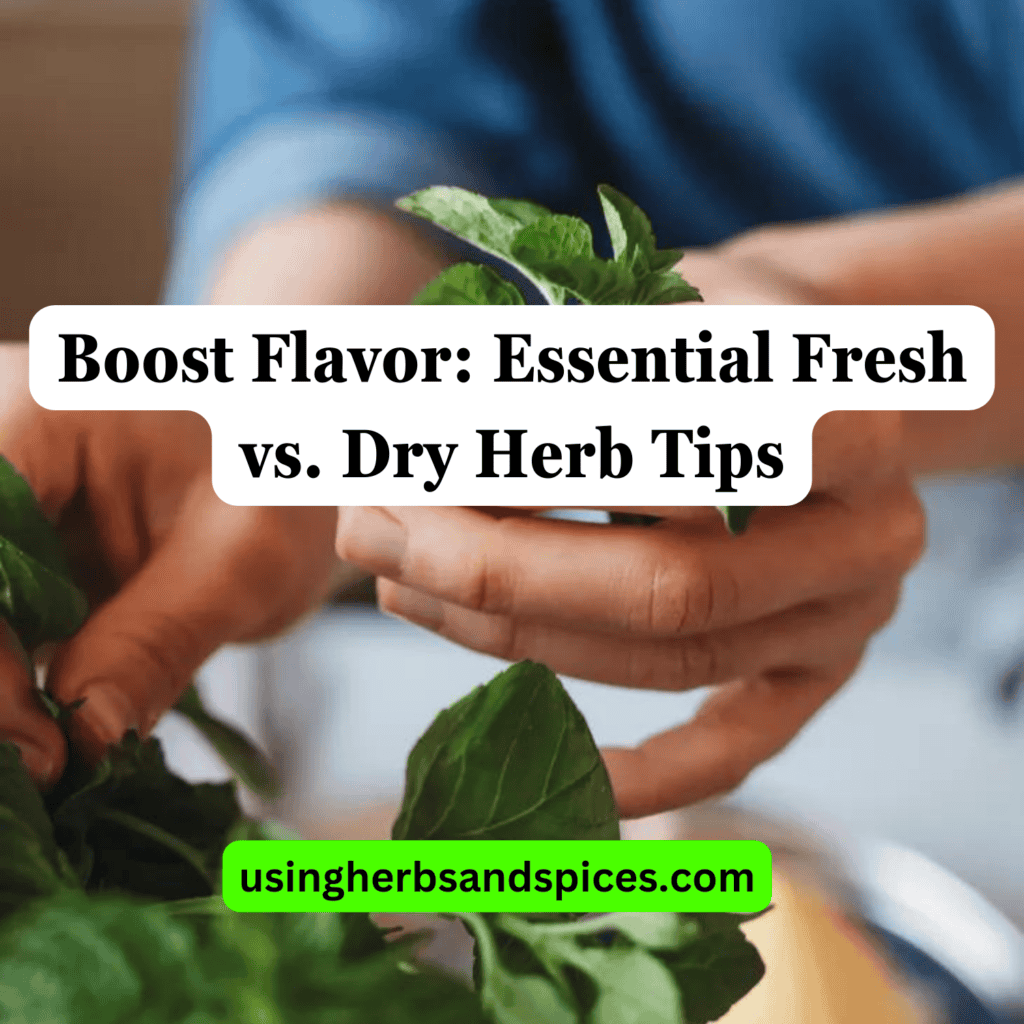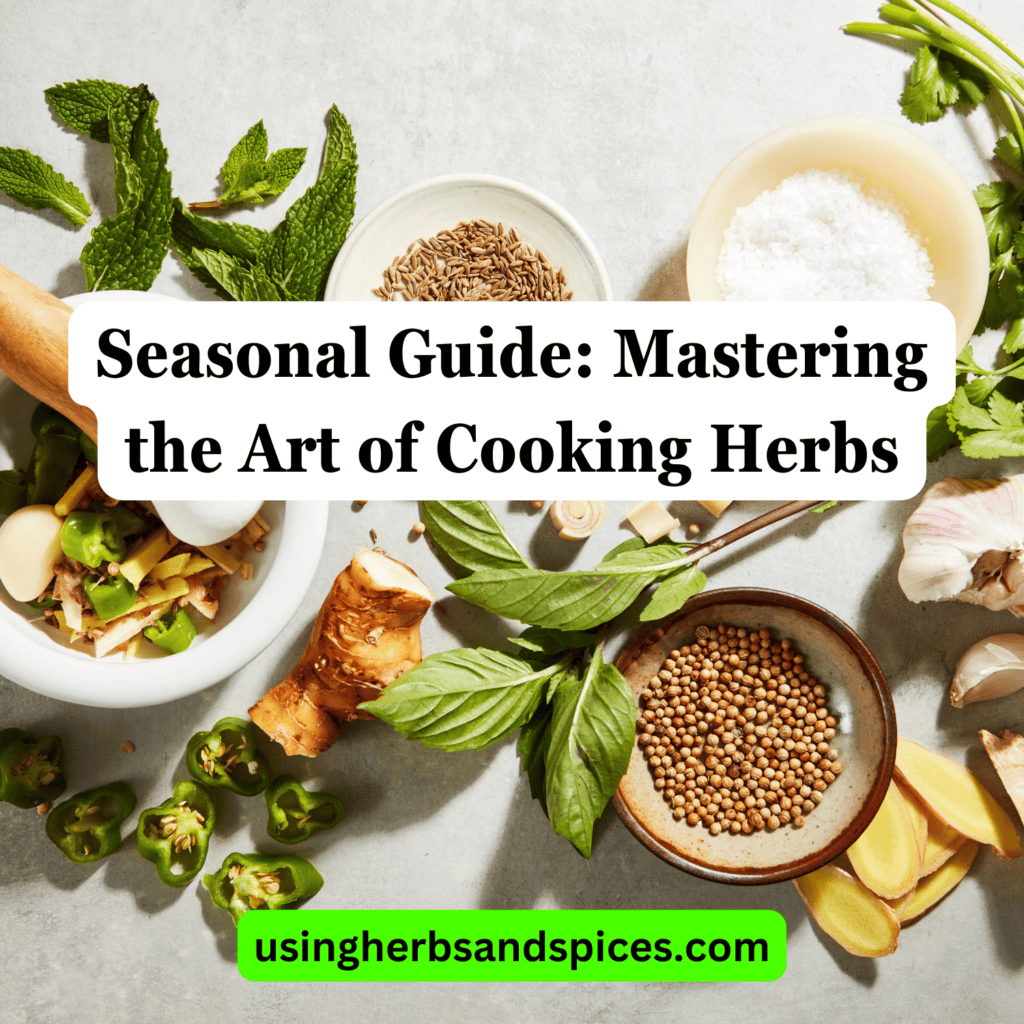SUMMARY: Dried herbs often pack a stronger flavor than fresh, due to concentrated compounds developed during the drying process. The choice between using them depends on your flavor potency needs and the specific culinary application.

Ever wondered if your dishes lack the robust flavors they deserve because you’re choosing fresh over dried herbs?
This article dives deep into the essence of dried herbs and their flavor potency, especially as we move into 2024.
- Understanding Dried Herbs
- The Science Behind Flavor Potency
- Flavor Potency Trends in 2024
- Choosing Between Fresh and Dried
Continue reading to explore how the right choice between fresh and dried herbs can elevate your culinary creations.
Understanding Dried Herbs
Dried herbs are the cornerstone of any flavor-focused kitchen, offering a concentrated taste that fresh herbs can seldom match. These herbs are carefully dehydrated to preserve their essential oils, which are the source of their potent flavors. This process allows dried herbs to be stored and used over a longer period than their fresh counterparts, making them a staple in pantries around the world. The drying process, whether it’s air-drying, oven-drying, or using a dehydrator, plays a critical role in enhancing the herbs’ taste profiles. With a proper understanding of how dried herbs are prepared, their characteristics, and their benefits, cooks can effectively incorporate these flavor powerhouses into their culinary repertoire.
The Science Behind Flavor Potency
When it comes to understanding the flavor potency of dried versus fresh herbs, science provides clear insights. The key lies in the concentration of essential oils and aromatic compounds found in herbs. Drying herbs effectively removes their water content, which, paradoxically, can concentrate these flavor compounds.
However, the process is not without its nuances. The drying method plays a crucial role in determining the final flavor profile of the herb. Slow air-drying at room temperature is generally considered the best method to preserve the herbs’ essential oils, thus maintaining their potent flavors. In contrast, using high heat can evaporate these oils, leading to a significant loss of flavor.
Moreover, the shelf life of dried herbs is markedly extended compared to their fresh counterparts, albeit at a gradual loss of potency over time. It’s a balance between the immediate enhancement in flavor potency post-drying and the eventual, natural decline as the herbs age.
Understanding these dynamics is essential for both culinary professionals and home cooks, as it influences the choice of herbs used in cooking and seasoning. Thus, appreciating the science behind dried herbs not only enriches our culinary practices but also elevates the dining experience by ensuring the flavors are robust and deeply aromatic.
Flavor Potency Trends in 2024
As we approach 2024, the landscape of culinary preferences and ingredient sourcing is markedly evolving, with dried herbs taking a prominent spot. The surge in popularity for dried herbs is largely attributed to their prolonged shelf life and concentrated flavor profile. These factors are particularly appealing in a climate where sustainability and efficiency in cooking practices are increasingly prioritized by consumers.
Emerging trends indicate a growing appreciation for exotic and unique flavors, steering the demand towards more potent and versatile dried herbs. Herbs such as dried lavender, fenugreek, and sumac are witnessing a remarkable uptick in usage, not only in professional kitchens but also among home cooks looking to elevate their dishes with distinct flavors and aromatic qualities.
The trend also sees a fusion between traditional and contemporary culinary techniques, where the use of dried herbs is being innovated beyond the typical. From infusion in oils and vinegars to being ground into fine powders for use in modernist cuisine, the potential of dried herbs is being unlocked in creative new ways. This push towards experimentation is partly driven by the increased accessibility of international herb varieties, making it easier for culinary aficionados to explore and incorporate global flavors into their cooking repertoire.
Furthermore, with the rise of digital platforms and social media influencing consumer choices, there is a notable shift towards educating oneself on the benefits and applications of dried herbs. This has fostered a more discerning approach to selecting herbs based on their flavor potency and quality, with a preference for organically grown and sustainably sourced options that promise a superior taste experience.
In essence, the year 2024 is set to witness a transformative phase in the culinary world with dried herbs at the helm, driving both innovation and sustainability in cooking practices globally. As consumers become more conscious of their dietary choices and the impact of their cooking methods, the emphasis on dried herbs and their bountiful flavor profiles is expected to grow even further.
Choosing Between Fresh and Dried
The decision to use fresh or dried herbs depends on several factors, including the desired flavor intensity, the type of dish being prepared, and shelf life considerations. Fresh herbs offer a bright, vibrant flavor suitable for finishing dishes or making pestos, salsas, and salads. Their delicate nature often means they are best added towards the end of the cooking process to preserve their flavor and color.
Dried herbs, on the other hand, are ideal for dishes that require cooking over longer periods. Their concentrated flavors are released slowly, making them perfect for soups, stews, braises, and marinades. Given their potent nature, a general guideline is to use one-third the amount of dried herbs to fresh.
When it comes to shelf life, dried herbs outshine their fresh counterparts significantly. Properly stored in a cool, dark place, dried herbs can retain flavor for up to a year, making them a cost-effective option for those who wish to have a wide variety of herbs at their disposal without frequent shopping trips.
Culinary application also plays a vital role in choosing between the two. While fresh herbs are often associated with spring and summer dishes, dried herbs are typically used in hearty, comfort foods more common in fall and winter. This seasonal usage aligns with the flavor profiles and traditional recipes enjoyed during these times.
In summary, both fresh and dried herbs have their place in the kitchen. Understanding their unique characteristics and how they contribute to a dish’s flavor profile will help in making informed decisions that enhance your cooking.
Dried Herbs: Flavor Potency Trends in 2024 FAQs
Do dried herbs lose flavor over time?
Yes, dried herbs do lose flavor over time. The loss of flavor potency in dried herbs occurs because the essential oils, which are responsible for aroma and taste, gradually evaporate. To maximize their shelf life and flavor, it’s important to store dried herbs in airtight containers, away from direct sunlight and heat. Typically, dried herbs are best used within one to three years.
How can I maximize the flavor of dried herbs?
To maximize the flavor of dried herbs, crush or rub them between your fingers before adding them to your dish. This action helps to release more of the essential oils and enhances the flavor. Additionally, adding dried herbs early in the cooking process allows their flavor to infuse the dish more fully. Storing them correctly, as mentioned previously, also plays a critical role in flavor preservation.
What are the most potent dried herbs?
The most potent dried herbs typically include oregano, thyme, rosemary, and sage. These herbs not only retain their flavor well when dried but in many cases, become more concentrated. It’s these concentrated flavors that make them particularly valued in cooking, as they can impart a robust taste profile even in small amounts. However, potency can vary based on the drying process and storage conditions.
How does the drying process affect herb potency?
The drying process affects herb potency by removing water content, which concentrates the flavors inherent in the herb. Proper drying techniques aim to preserve the essential oils within the herbs, which are critical for maintaining flavor potency. Methods such as air drying, oven drying, or using a dehydrator can influence the final taste, with the goal being to minimize the loss of these oils while removing moisture.











